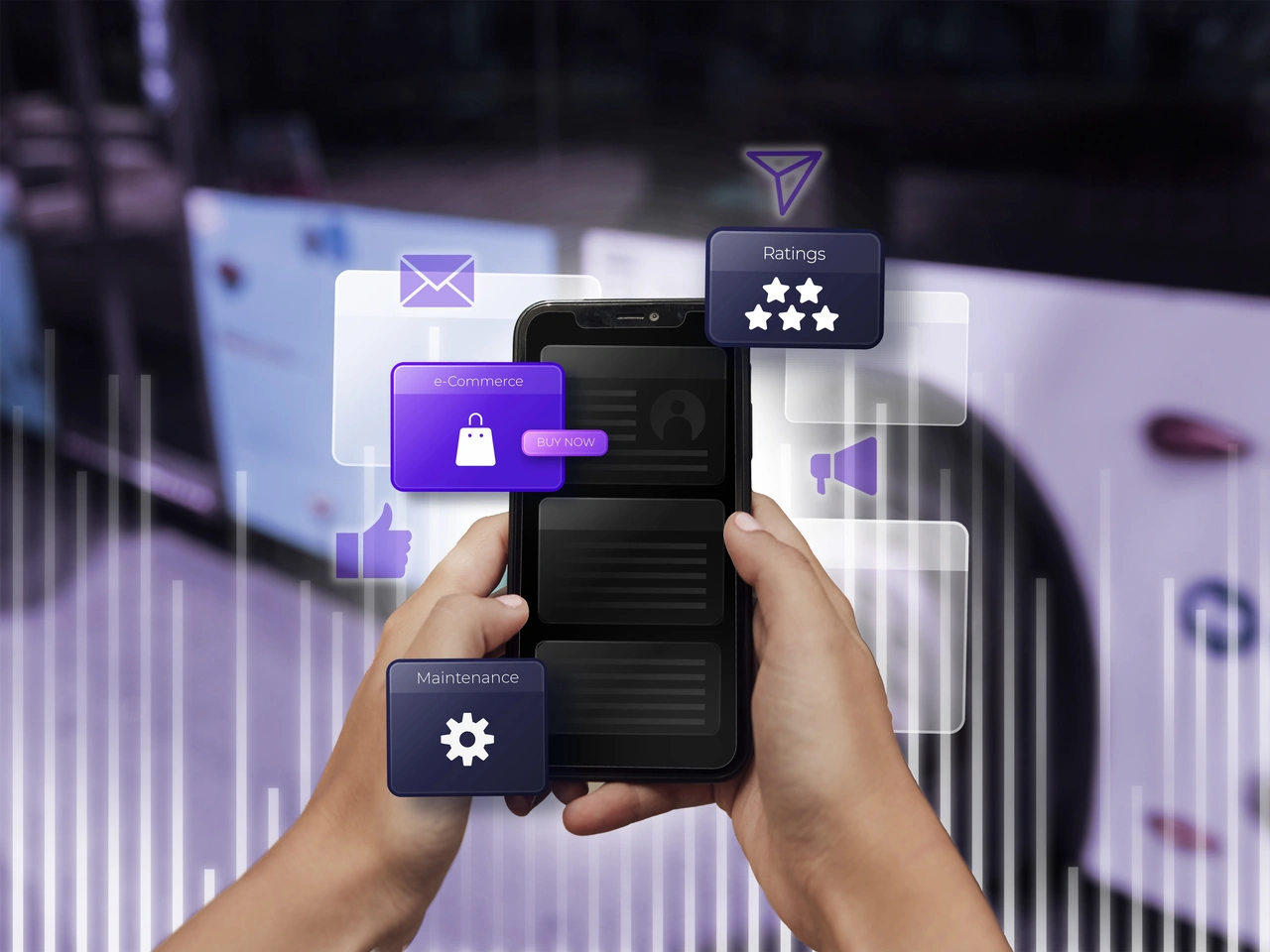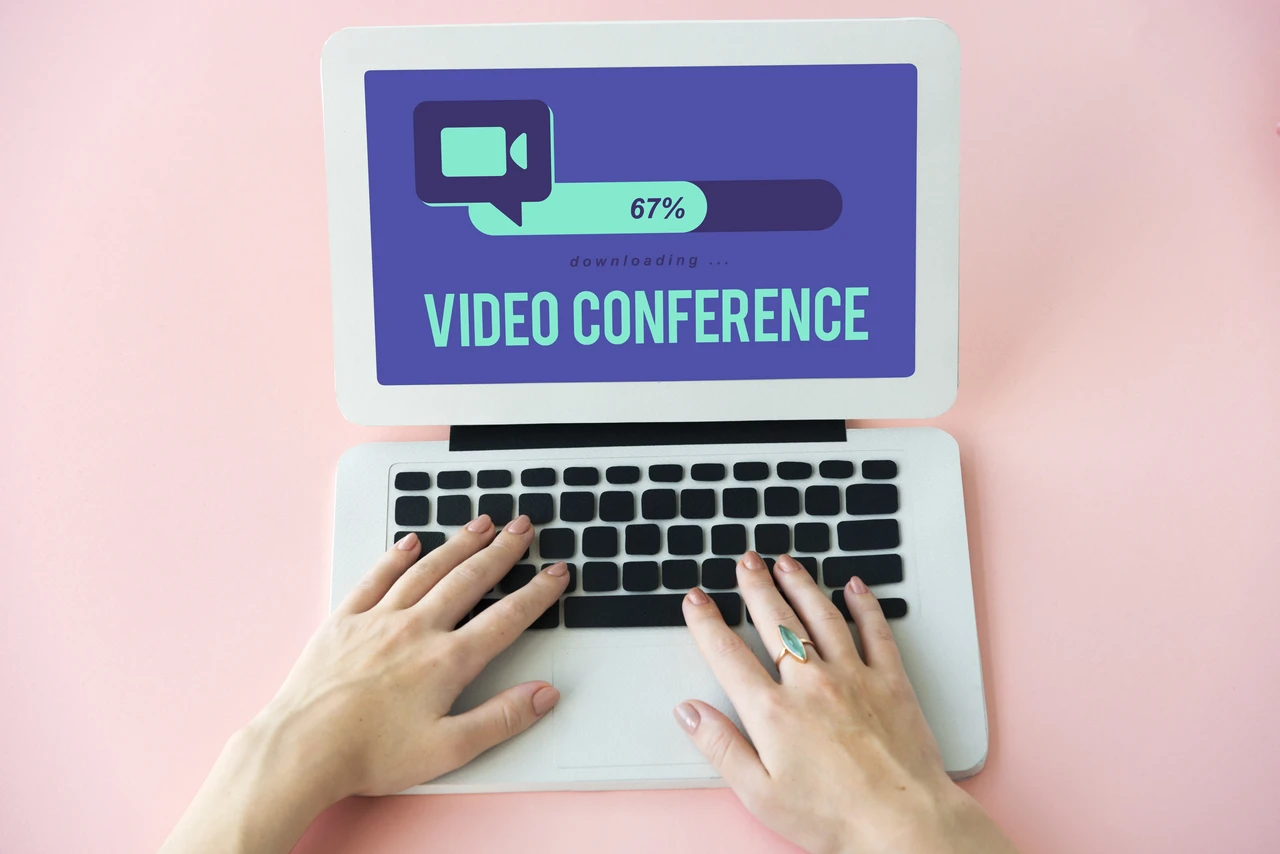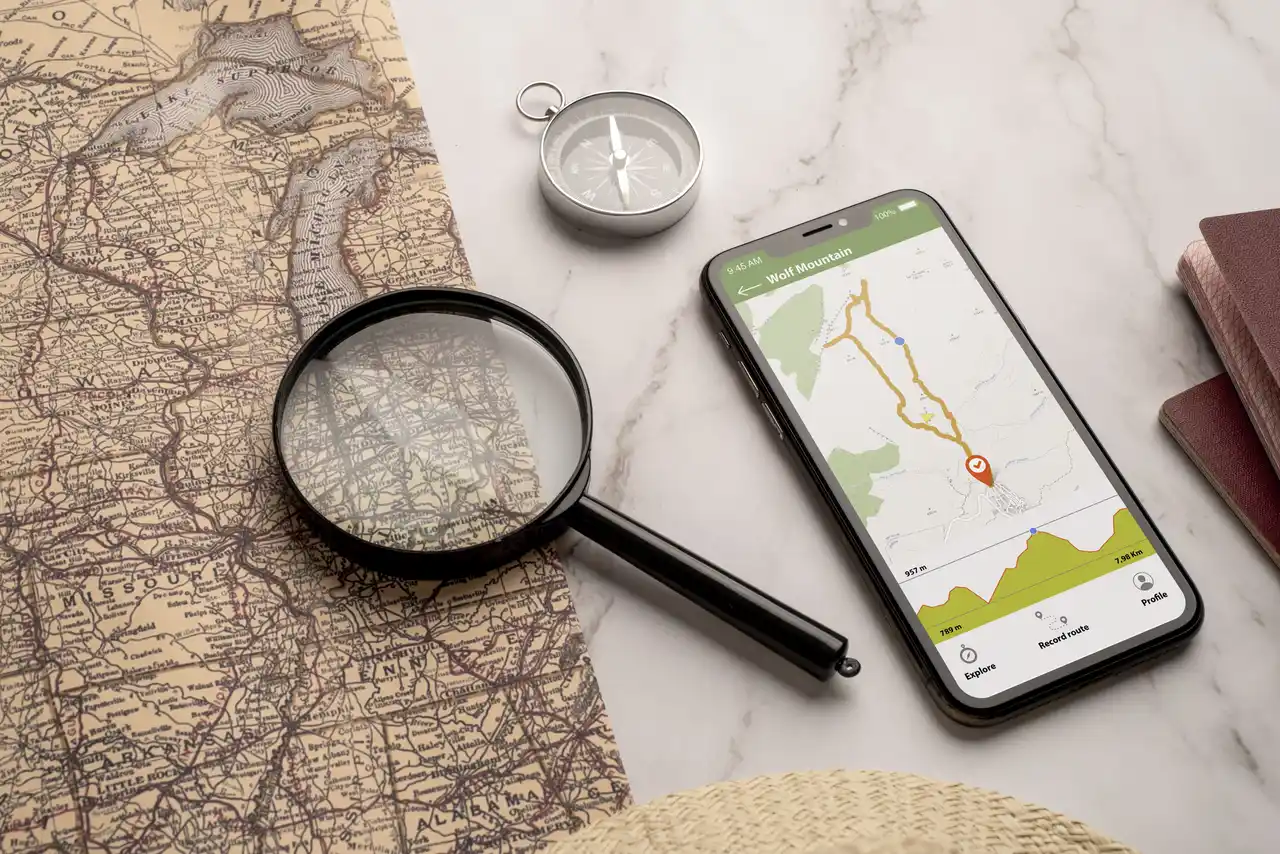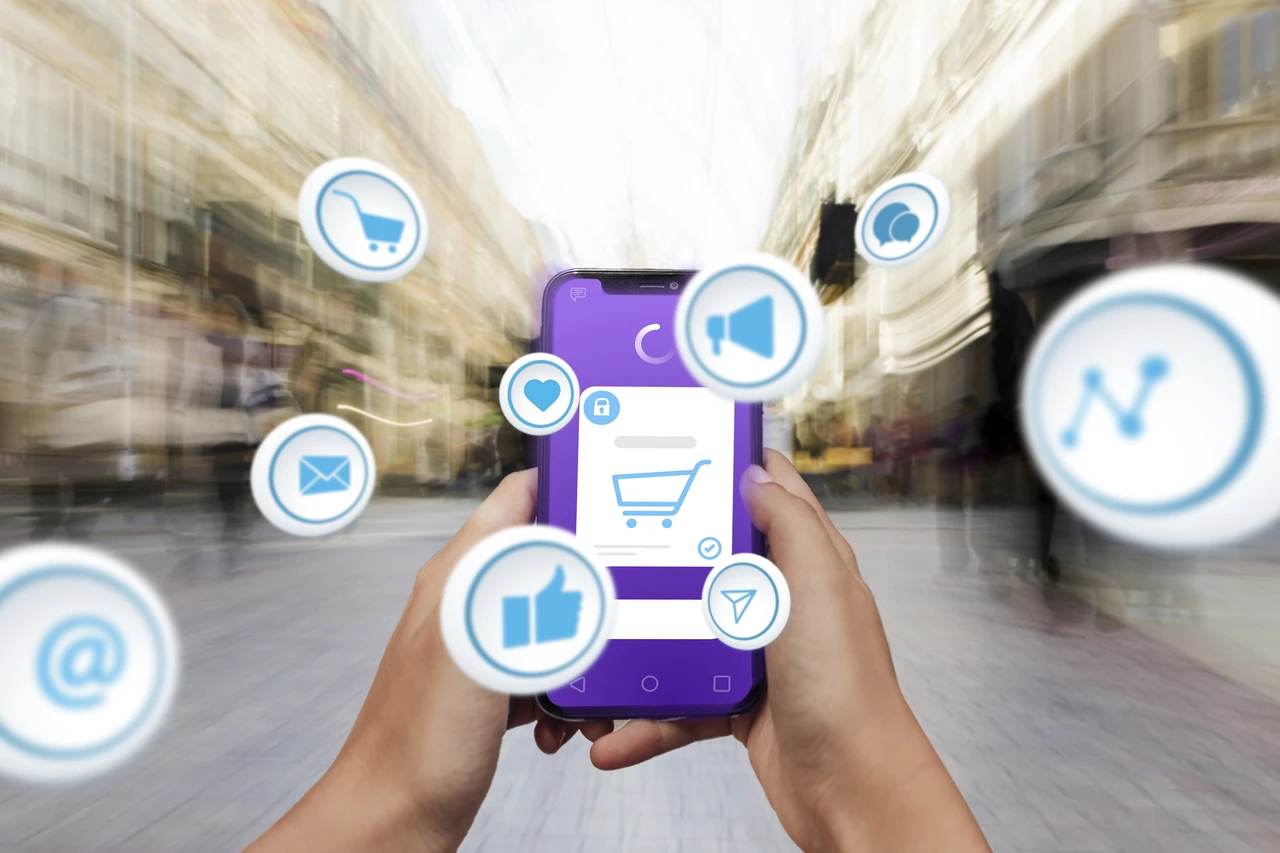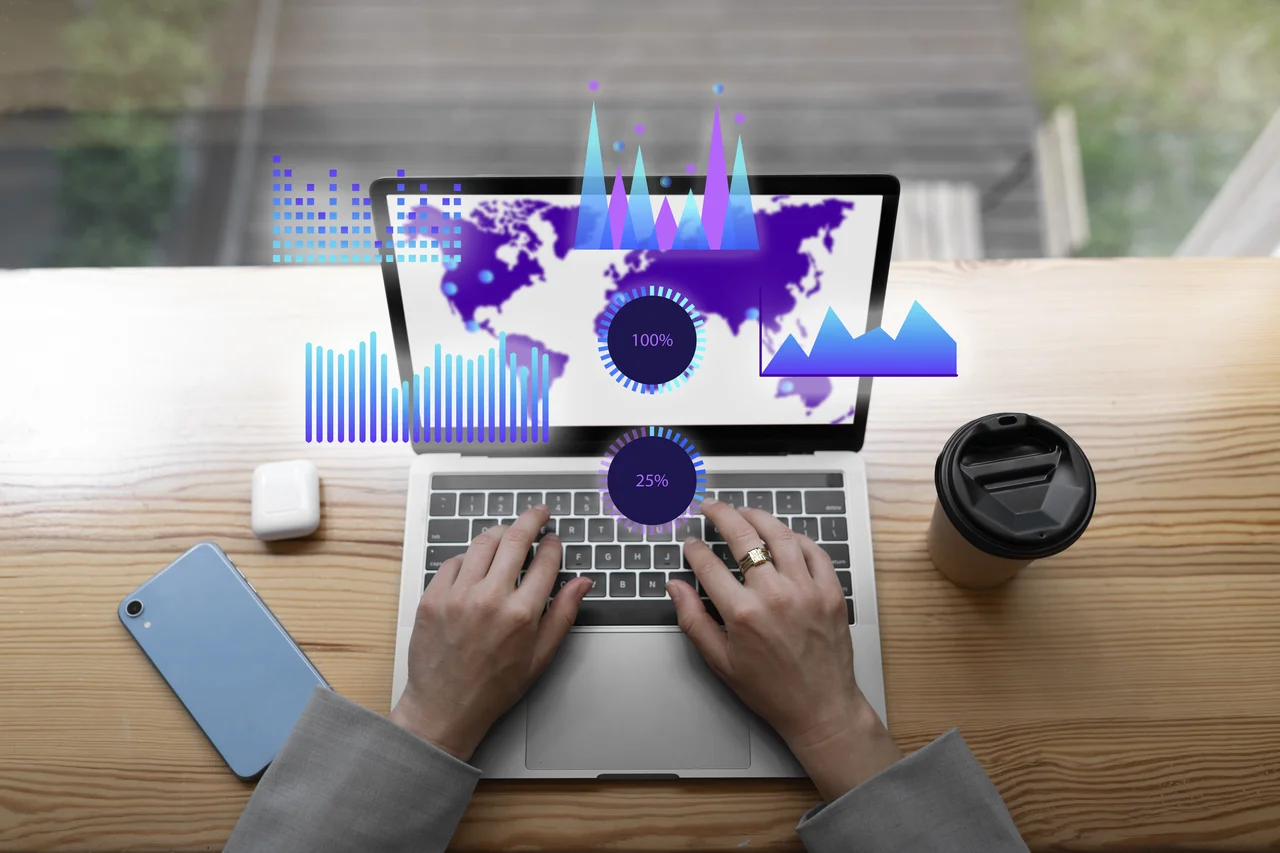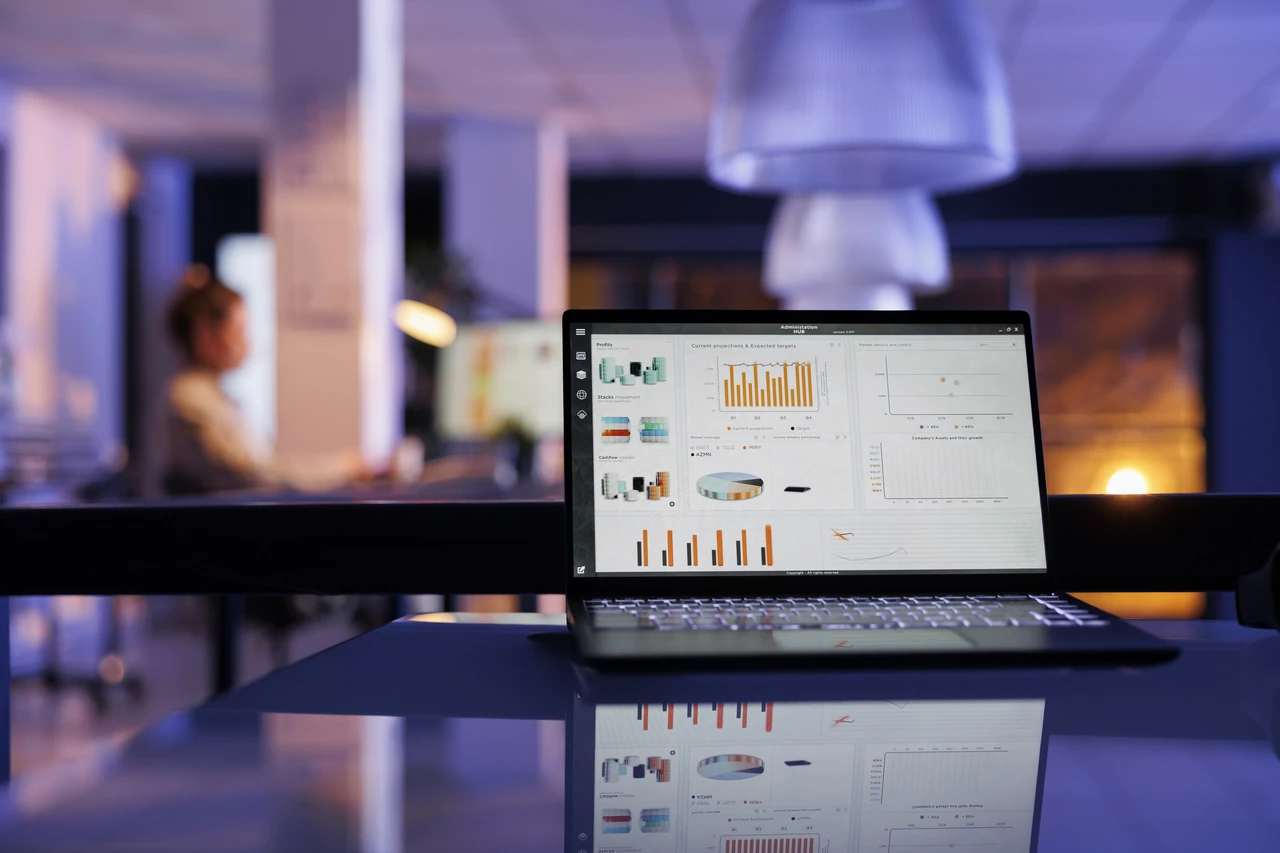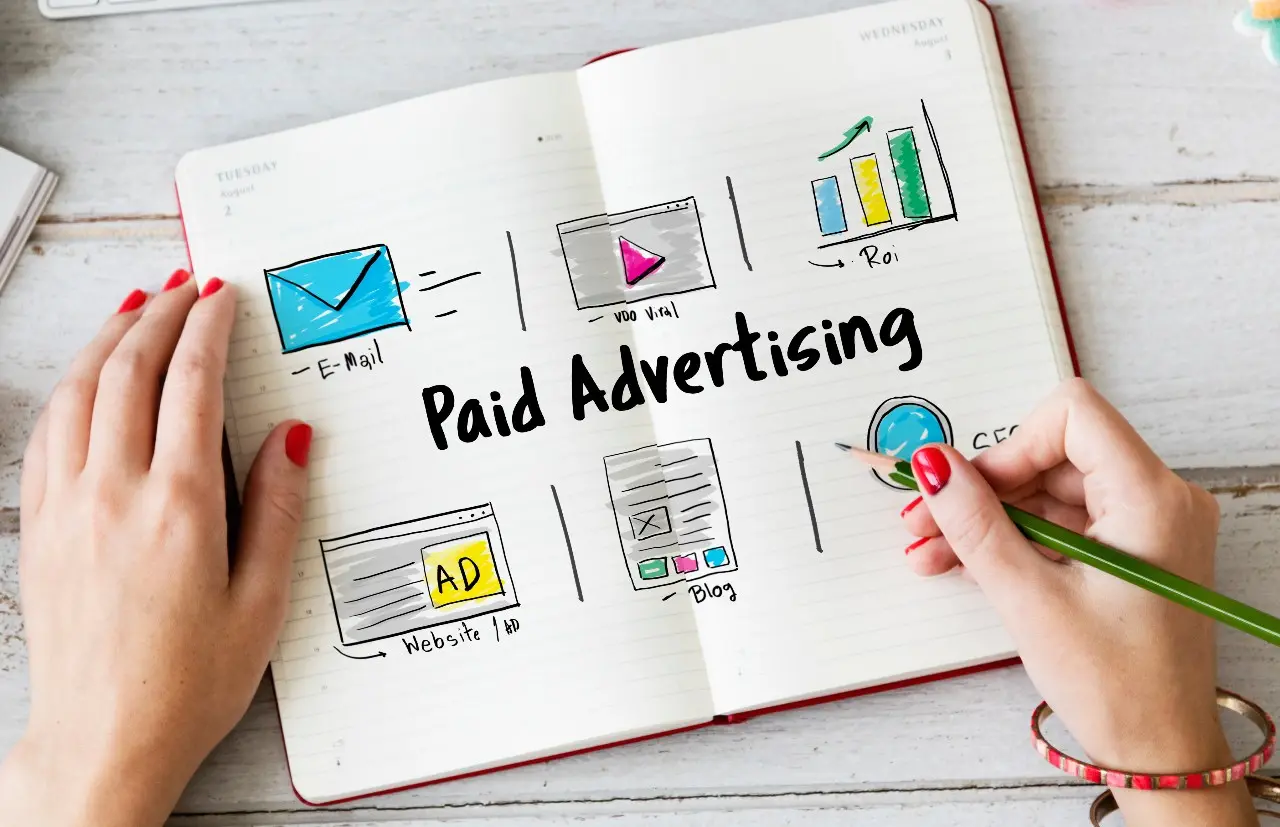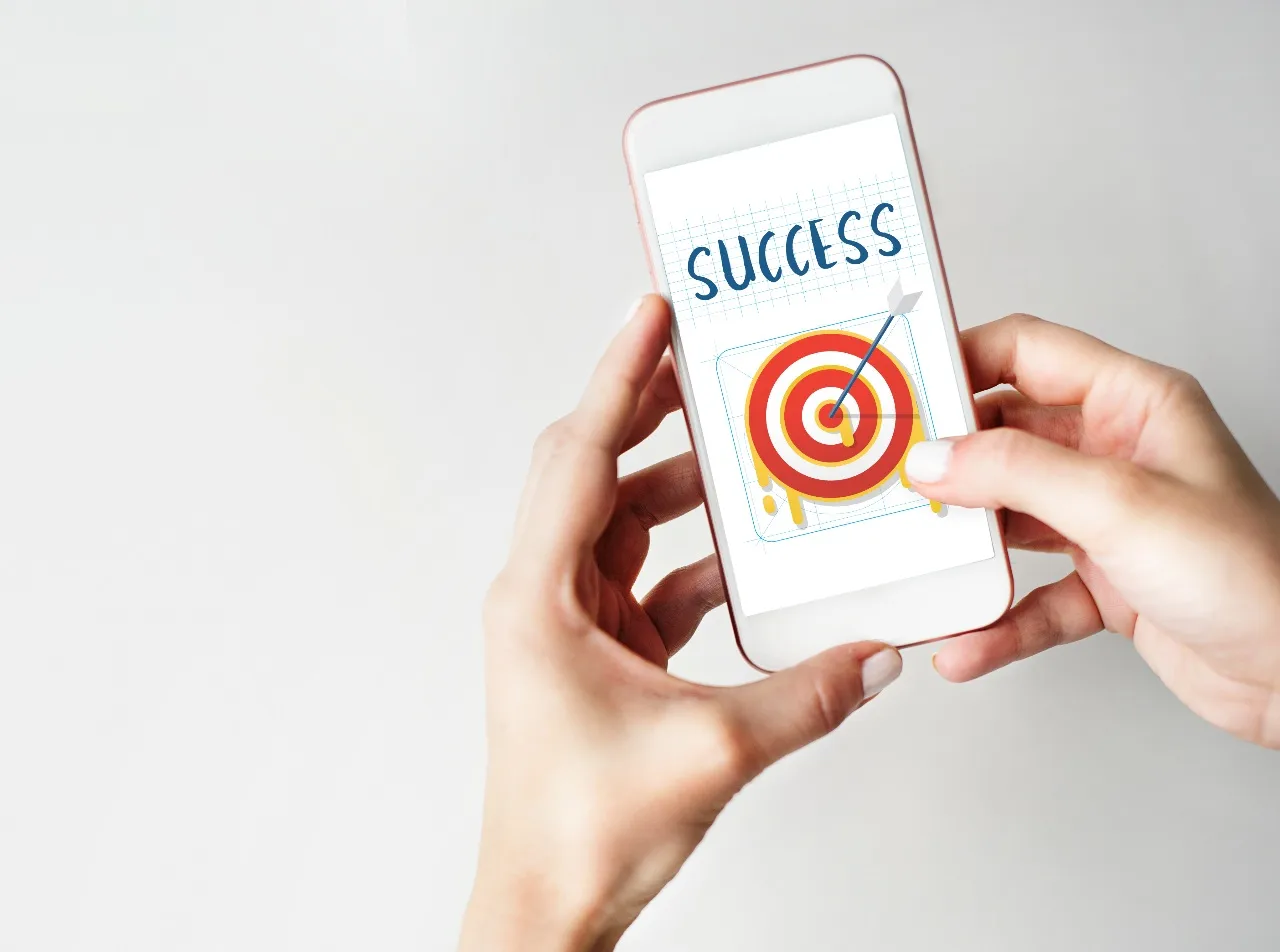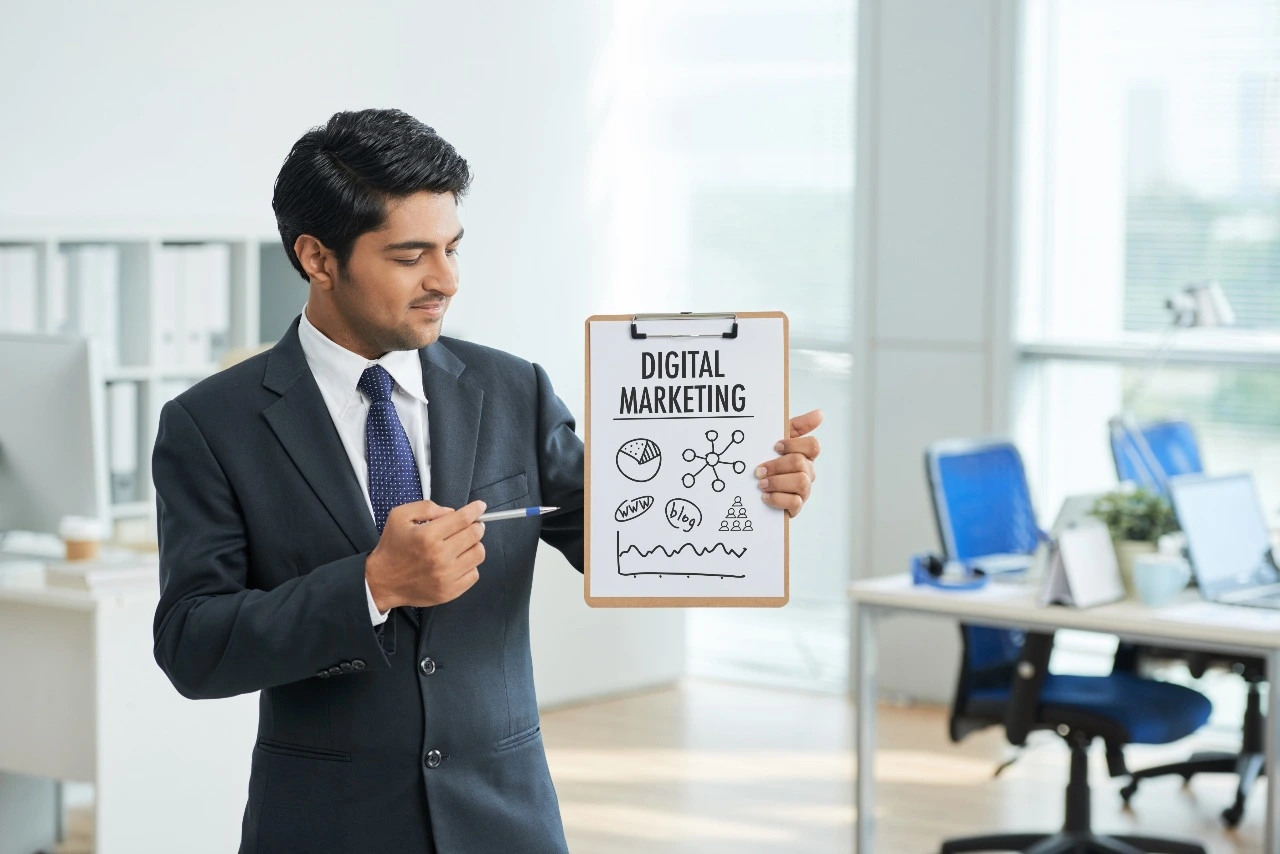Listen to article
Are you ready to tap into the power of mobile to transform your B2B marketing strategy?
In a world where smartphones are ubiquitous, understanding the latest B2B mobile marketing trends is an absolute must. With mobile devices generating almost 60% of all internet traffic globally, businesses that ignore mobile do so at their peril. You need to optimize your strategies to connect effectively with your target audience where they spend most of their time: on their phones.
But how is mobile reshaping B2B marketing, and what do you need to know to stay ahead?
In this article, we’ll explore the latest B2B mobile marketing trends, from the growing importance of mobile search and mobile-first content strategies to the rise of mobile video and the power of SMS marketing. Let’s dive in!
How Mobile is Reshaping the B2B Digital Landscape
As mobile devices continue to lead the charge in internet usage, their impact on B2B marketing cannot be overstated. In an era where convenience and on-the-go accessibility dominate decision-making processes, mobile optimization has quickly shifted from being a “nice-to-have” to an absolute necessity. The habits of younger, digitally native professionals are especially driving this transformation, signaling a need for B2B marketers to rethink how they connect with audiences who are just a tap away. Here are some data points shedding light on this mobile-first revolution:
- Approximately 59% of all internet traffic worldwide is generated through mobile devices, underscoring the importance of mobile-first strategies. Source
- An impressive 97.6% of internet users aged 16 to 24 own a smartphone, emphasizing the need for tailored mobile experiences for this digitally savvy demographic. Source
- Mobile devices drive a substantial amount of website traffic, accounting for 54% of all website visits. Source, Source
Takeaway: Optimize for Mobile or Risk Losing Relevance
The dominance of mobile in B2B internet traffic isn’t just a trend—it’s a fundamental shift in how business is conducted online. Neglecting mobile optimization could mean alienating a significant portion of your audience, especially younger professionals who rely heavily on their smartphones for research, networking, and communication. To stay competitive, B2B marketers must go beyond simply ensuring mobile-friendly websites. They should invest in strategies like mobile-optimized landing pages, accelerated loading speeds, and personalized content delivery catered to on-the-go users.
Pro Tip:
Don’t stop at mobile-friendly—aim for mobile-exceptional. Incorporate mobile-specific features like click-to-call buttons, touch-friendly navigation, and app integrations to enhance engagement and conversion rates. Tools like Google’s Mobile-Friendly Test can help you fine-tune performance and ensure your site delivers a superior mobile experience.
How Mobile Search Drives Key B2B Buying Decisions
In the modern B2B landscape, mobile search has emerged as a game-changer, transforming how buyers discover and evaluate products. With buyers increasingly relying on their smartphones for instant access to information, mobile search often serves as the starting point—and sometimes the deciding factor—in the purchase journey. For B2B marketers, this shift signals a critical need to meet potential customers where they are: on their mobile devices.
- Over 50% of individuals prefer mobile devices for online information searches and shopping, emphasizing mobile’s central role in B2B research and decision-making. Source
- Around 9.92% of smartphone searchers make a purchase tied to their search, showcasing the conversion potential of mobile queries. Source
- 66% of B2B buyers rely on search engine results to gather product information prior to purchasing, outpacing other channels like online ads (35%) and social media (23%). Source
- A typical B2B buyer performs approximately 12 Google searches before finalizing a purchase decision. Source
- Search engines dominate as the leading product discovery method for U.S. B2B buyers, with 66% using them to research products. Source
Takeaway: Mastering Mobile Search is Non-Negotiable
The data reaffirms the undeniable influence of mobile search on the B2B buying cycle—shaping research, building awareness, and driving purchases. Ignoring mobile optimization can mean missing out on a significant share of potential buyers who are actively searching for solutions. By aligning your strategy with mobile search behavior, you can ensure that your brand becomes a seamless part of your audience’s decision-making process, outshining competitors who remain stuck in outdated desktop-only approaches.
Pro Tip:
Audit your website’s mobile experience regularly to ensure fast load times, intuitive navigation, and responsive design. In addition, use tools like Google Search Console to identify top mobile search queries and craft content that aligns with these intents. Don’t forget to leverage schema markup for rich snippets, helping your pages stand out in mobile search results.
The Mobile-Driven Evolution of Social Media in B2B Marketing
As mobile devices embed themselves into nearly every facet of our daily lives, their influence on social media—especially in the realm of B2B marketing—has become undeniable. Social platforms have transcended their initial purpose, evolving into powerful tools for thought leadership, audience engagement, and lead generation. With mobile-first interactions now dominating how users access these platforms, adopting a mobile-first strategy isn’t just an option; it’s a strategic imperative for businesses aiming to stay relevant and impactful.
- Globally, there are 5.17 billion social media users as of July 2024, with mobile devices serving as the primary access point to these platforms. Source
- 99% of social media users access platforms from their mobile phones, solidifying mobile’s role as the leading device for engagement. Source, Source
- B2B social media ad spending is forecasted to increase by 46.2% in 2025, reaching $9.66 billion, reflecting the growing reliance on these platforms for business growth. Source
- 95% of B2B marketers create social media content, and 91% utilize social media as a primary content distribution channel. Source
- Over 70% of B2B marketers reported improved sales through social media strategies in the last year. Source
- LinkedIn dominates the B2B space, with 84% of marketers naming it their most valuable social media platform. Source
- 73% of B2B marketers include social media advertising and promoted posts in their paid channel strategy. Source
- Almost 49% of B2B marketers find social media advertising to be their most effective paid channel tactic. Source
- 98.5% of Facebook users access the platform via mobile devices, showcasing the platform’s mobile-first nature. Source, Source
- On Pinterest, 82% of users engage with the platform through its mobile app. Source, Source, Source
- Mobile devices account for nearly 90% of YouTube’s visits, making video content optimization for mobile devices more important than ever. Source
B2B marketers who embrace social media with a mobile-centric lens are better positioned to reach their audiences where they are most active—on their smartphones. With platforms like LinkedIn, Facebook, and YouTube seeing high mobile usage, aligning your strategy to mobile-first behaviors isn’t just about meeting your audience’s expectations; it’s about anticipating their needs and delivering content in a way that drives deeper engagement. From leveraging mobile-focused ad formats to crafting punchy, visually compelling content, businesses can create tailored experiences for professionals constantly connected on their mobile devices.
Pro Tip:
To make your social media campaigns mobile-friendly, focus on snackable content—quick, value-driven posts designed to captivate scrolling users. Use vertical video formats, engaging headlines, and visually striking graphics to catch attention, and ensure all links and CTAs are optimized for seamless mobile navigation.
The Power of Video in Shaping B2B Mobile Marketing Strategies
As mobile devices increasingly dominate decision-makers’ digital lives, video content has emerged as a key driver for B2B marketing success. Whether it’s educating prospective buyers, building thought leadership, or simplifying complex topics, video’s dynamic nature makes it uniquely suited to capturing attention on the go. But in an era of information overload, it’s not just about creating video—it’s about crafting content that resonates, adapts to mobile consumption habits, and stands out amidst the noise.
- Video creativity is key, with formats ranging from bite-sized TikToks to long-form branded series reshaping how brands tell their stories. Source
- A massive 92% of marketers rank video as an “important” part of their strategy, underscoring its universal appeal and ROI potential. Source
- Video remains the most effective B2B content type, thriving across channels like websites, email campaigns, and social media platforms. Source
- It outperforms other formats for B2B content effectiveness, with 58% of marketers listing video as their top choice—beating out case studies, e-books, and research reports. Source
- YouTube plays a pivotal role in the buyer research phase, with 65% of B2B buyers using the platform to inform decisions. Source
Takeaway: Engage Buyers Where They Are—On Mobile
Video content isn’t just another tactic—it’s the language of today’s mobile-first business landscape. For B2B marketers, this means leveraging video not only to inform but to engage audiences across their preferred platforms, whether it’s YouTube, LinkedIn, or even Instagram Reels. The real differentiator lies in aligning video strategies with the buyer journey—short, impactful clips during the awareness phase, and longer, value-packed content as decision time approaches.
Pro Tip:
Keep mobile behavior in mind. Optimize your videos for vertical formats, add captions for sound-off viewing, and embed clear CTAs to encourage further engagement. When your videos meet your audience’s habits, they don’t just watch—they act.
Elevating Mobile Strategies for Lead Generation and Seamless User Experience
As mobile usage continues to dominate how professionals interact with digital content, B2B companies must adapt their strategies to meet shifting expectations. A polished mobile experience isn’t just a nice-to-have; it’s now a critical driver for lead generation, building trust, and encouraging conversions. Whether it’s leveraging location-based personalization or enhancing mobile site performance, businesses that prioritize mobile optimization will better position themselves to capture and retain high-value leads in an increasingly competitive marketplace.
- SalesRabbit, a B2B company, leveraged chatbots to boost website leads by 50%. Source
- 70% of B2B marketers report increasing their budgets specifically for lead generation initiatives. Source
- Around 67% of mobile users prefer to purchase from companies offering mobile sites or apps tailored to their location. Source
- Approximately 30.63% of mobile users are more likely to make a purchase when personalized product recommendations are highlighted on a mobile site or app. Source
- A positive mobile experience directly influences purchasing behavior, with 61% of consumers stating they are more likely to buy from a mobile-friendly website. Source
Takeaway: Mobile Success is Built on Optimization and Personalization
The data paints a clear picture: mobile optimization goes beyond aesthetics—it’s about functionality, speed, and personalization for a better user experience. B2B companies that fail to deliver on these fronts risk losing potential leads and revenue, especially given the growing importance of tailored mobile solutions. Chatbots, location-based customization, and user-driven design elements are no longer optional; they are the foundation of a successful mobile strategy.
Pro Tip:
To further enhance your mobile performance, regularly test loading speeds, streamline navigation, and integrate AI-driven tools to provide personalized recommendations in real-time. Additionally, don’t overlook accessibility—ensuring your mobile site accommodates all users will set your brand apart and widen your potential audience. Prioritizing mobile optimization can also complement your broader B2B website strategy to create a seamless and cohesive digital experience.
The Mobile-First Advantage in Email Marketing Automation
As the reliance on mobile devices continues to rise, email marketing automation has emerged as a cornerstone for successful B2B strategies. With professionals checking their inboxes on-the-go, crafting mobile-optimized email campaigns is no longer a choice but a necessity. Seamlessly combining automation with mobile optimization not only enhances engagement but also ensures your message reaches decision-makers wherever they are, at the right time.
- Email marketing revenue is projected to soar to $13.69 billion by 2025, a sharp climb from $7.5 billion in 2020, underlining the enduring impact of email as a key marketing channel. Source
- 82% of marketers utilize email automation, achieving an impressive eightfold boost in email open rates, proving the power of automation in driving engagement. Source
- The global pool of email users is projected to grow to 4.6 billion by 2025, up from 4 billion in 2020, reflecting email’s continued dominance as a communication tool. Source
- 59% of marketers report that email marketing is over two times more effective than paid ads in driving leads, emphasizing its strength in delivering cost-effective results. Source
- 83% of B2B marketers rank email among their most important channels, showcasing its vital role in B2B communication strategies. Source
- For 44% of B2B marketers, email tops the list as the most effective content distribution channel. Source
- Approximately 44% of B2B marketers prioritize email to drive traffic to landing pages, outperforming other methods like SEO (~36%) and paid ads (~33%). Source
Email marketing automation is not just another tool in the B2B marketer’s toolkit—it’s the linchpin for high-performing campaigns in a mobile-first landscape. By harnessing the power of automation and ensuring content is responsive and personalized, businesses can keep pace with the shifting behaviors of their audience. The secret to sustained success lies in delivering value-packed, mobile-friendly emails that naturally guide leads down the funnel toward conversions.
Pro Tip:
Go beyond basic automation by leveraging analytics tools to track mobile user behavior and optimize your campaigns accordingly. Experiment with A/B testing for subject lines, email layouts, and CTAs to discover what resonates best with your mobile audience, ensuring every message hits its mark.
Unlocking the Potential of Mobile-First B2B Advertising
As mobile continues to dominate how professionals consume content and make purchasing decisions, B2B marketers are shifting their focus to mobile-centric advertising platforms. The increasing sophistication of these platforms—offering integrated campaigns across social media, mobile apps, and even connected TV (CTV)—has opened up new avenues for targeting decision-makers effectively. With mobile devices becoming the primary touchpoint for professional engagement, successful campaigns are those that embrace innovation and align with the habits of today’s on-the-go audience.
- LinkedIn’s ad revenues are forecasted to grow by 12.7% in 2025, reaching $5.09 billion, while LinkedIn B2B display ad revenues are expected to grow 12.5%, reaching $4.73 billion. Source, Source
- In April 2024, LinkedIn introduced connected TV (CTV) ads, allowing marketers to extend B2B campaigns to platforms like Paramount, Roku, and Samsung Ads. Source
- 61% of B2B marketers identify SEM/PPC as the most effective paid channel for content marketing, followed by social media ads (49%), sponsorships (48%), and digital display advertising (35%). Source
- U.S. marketers allocate 19% of their budgets to mobile advertising, reflecting mobile’s increasing influence in driving engagement and conversions. Source
- Mobile marketing spend reached $327 billion in 2022 and is projected to hit $400 billion by 2024. Source
- In the U.S., mobile accounted for 48% of B2B marketing spend in 2022. This figure is expected to exceed 50% by the end of 2024. Source
It’s clear that mobile-centric strategies are no longer just an option—they’re the foundation of modern B2B marketing success. With ad innovations like LinkedIn’s CTV integration and the continual rise of mobile ad spend, B2B marketers must remain agile, experimenting with new formats to keep pace with changing consumption habits. By blending traditional approaches (like SEM) with emerging opportunities (like CTV ads), businesses can capture their audience’s attention more effectively.
Pro Tip:
Go beyond basic targeting. Many platforms now offer advanced options like account-based marketing (ABM) tools and AI-driven recommendations. Use these to deliver hyper-personalized campaigns that align with your audience’s preferences and behaviors while maximizing ROI.
Transforming Mobile Advertising with Innovation
As consumers spend more time on their devices, mobile advertising has become a critical channel for reaching audiences where they are most engaged. But staying competitive in this space requires more than just adopting mobile ads—it’s about leveraging the latest trends and technologies to deliver experiences that resonate. With attention spans shrinking and expectations for quality content rising, mobile advertisers have to think beyond traditional tactics and embrace immersive, interactive, and seamless journeys.
- Advertisers are diversifying beyond basic banner ads, opting for dynamic, high-impact formats that captivate users through motion, interactivity, and storytelling. Source
- Native advertising is gaining traction as it blends seamlessly into the design and flow of mobile apps and sites, offering a more organic and less intrusive way to engage users. Source
- The rollout of 5G technology is set to revolutionize how consumers experience mobile content, with blazing-fast speeds and ultra-low latency enabling richer media formats and smoother interactions. Source
Key Takeaway: The Dawn of Immersive Mobile Advertising
Mobile marketing is no longer about simply being present on a platform—it’s about creating meaningful, engaging, and innovative experiences that capture attention amidst fierce competition. The rise of native advertising and the game-changing possibilities of 5G will empower advertisers to craft campaigns that feel less like ads and more like seamless, enjoyable user experiences. To succeed, brands must prioritize formats that balance creativity with relevance, ensuring their message adds genuine value.
Pro Tip:
Combine the power of 5G with innovative ad formats to push boundaries. For example, use augmented reality (AR) or rich media ads to create a wow factor while keeping the experience smooth and user-friendly. By doing so, you won’t just grab attention—you’ll hold it long enough to drive meaningful engagement.
Unlocking the Potential of SMS Marketing in B2B Mobile Strategies
In a competitive B2B landscape where timely communication is key, SMS marketing has emerged as a direct and effective way to engage decision-makers on their mobile devices. What sets SMS apart is its ability to cut through the noise and ensure your message not only gets delivered but is also seen—making it an invaluable asset for marketers aiming to forge stronger connections without delay.
- Text messages boast high deliverability rates, ensuring that your message reaches your intended audience promptly. Source
- SMS marketing also benefits from impressive open and engagement rates, surpassing many other digital marketing channels. Source
Takeaway: Elevate B2B Communication with SMS
SMS marketing’s unparalleled ability to ensure instant delivery and capture attention makes it a game-changer for B2B brands aiming to establish direct lines of communication. The challenge, however, lies in using this channel thoughtfully. Keep in mind that the real power of SMS lies in its immediacy and relevance—send messages that matter at the right time to avoid overwhelming your audience.
Pro Tip:
To boost engagement, experiment with time-sensitive offers, appointment reminders, or event updates delivered via SMS. For maximum impact, integrate SMS with other marketing channels like email or push notifications to create a cohesive multi-channel strategy for your audience. Exploring email marketing B2B lead generation can complement your SMS efforts by helping you reach decision-makers with both immediacy and personalized messaging.
Conclusion
As the statistics reveal, the influence of mobile on B2B marketing is nothing short of transformative. From mobile-first content strategies to high-impact advertising formats, the mobile landscape offers endless opportunities for growth and innovation. Companies that prioritize mobile optimization—whether through responsive websites, mobile-friendly emails, or engaging video content—position themselves to connect with their audiences in more meaningful and impactful ways. The rise of mobile-centric platforms and tools like social media, SMS, and video further underscores the need for a well-rounded, mobile-first approach.
But staying ahead in the fast-paced world of B2B mobile marketing requires more than just understanding current trends. It demands a proactive mindset, a willingness to experiment, and the right strategic partners to guide you through the complexities of mobile-first strategies. Whether you’re looking to enhance lead generation, boost your digital presence, or optimize campaigns for maximum ROI, mobile marketing opens doors to endless opportunities.
Ready to boost your traffic and grow your website? Your customers are looking for you, and our SEO services can help you be found across search engines. Let’s achieve mobile marketing success together!
About B2B Mobile Marketing Trends Shaping Strategy
This article was written by the Scopic Studios team and reviewed by Araksya Hakobjanyan, SEO Lead at Scopic Studios.
Scopic Studios delivers exceptional and engaging content rooted in our expertise across marketing and creative services. Our team of talented writers and digital experts excel in transforming intricate concepts into captivating narratives tailored for diverse industries. We’re passionate about crafting content that not only resonates but also drives value across all digital platforms.
Note: This feature blog’s image are sourced from Freepik.










